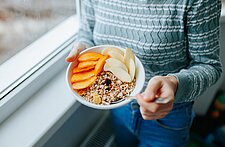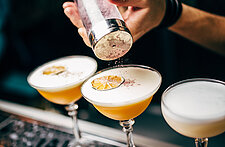As we explored in the first two parts of this series on Gen Z, this young generation expects more than business-as-usual. Gen Z consumers (approximately 10-25 years old in 2020) want to connect with brands on a deeper level, such as by engaging on social issues. They also seek ways to improve mental and physical wellness, while at the same time valuing convenience.
Don't miss the next articles in this series, subscribe to the Weekly In-sight Newsletter!
Even though Gen Z might not have much purchasing power yet, that will change as more enter the workforce. Meanwhile, food composes the largest share (25%) of Gen Z consumers’ wallets, according to a Piper Sandler survey. As such, food and beverage brands that can take Gen Z preferences into account and identify relevant trends can have great growth potential.
Health Is the New Wealth
One of the most important Gen Z trends is the emphasis on wellness, of which food and beverage play a role alongside areas like exercise and relaxation.
As we discovered through our Healthy Lifestyles study, Gen Z focuses on the following six dimensions of wellness:
1. Physical
2. Spiritual
3. Emotional
4. Intellectual
5. Social
6. Psychological
Because there are multiple components to wellness, brands should not assume that low-calorie foods or high-nutrient items will automatically appeal to Gen Z. Instead, Gen Z focuses on the following categories that can cut across the six dimensions of wellness:
● Stabilizers: Gen Zs want to ground themselves with wellness in their daily lives. Organic and plant-based products can fit in this category. Many Gen Z consumers want to increase plant-based protein consumption, like nut, oat and bean protein. Or, they at least want to reduce meat intake.
As part of the stabilizer category, Gen Z consumers also see food as medicine, and they’re turning to ancient practices like Ayurveda, with its therapeutic spices. Fermentation for gut health also appeals to Gen Z.
● Optimizers: Adding functional ingredients to optimize health is also popular with Gen Z. Many young consumers like ready-to-drink beverages, especially when those include optimizers ranging from spirulina for natural energy to lavender for relaxation.
● Gratifiers: Even though Gen Z wants to be healthy, they don’t deprive themselves. In fact, eating and drinking gratifying food and beverages can be a part of mental wellness. Items like fast-food plant-based burgers and low- or no-alcohol drinks can be gratifying while supporting overall well-being.
PART 1: Understanding Gen Z
Brand loyalty can be hard to come by with Gen Z, but it helps when brands are honest and transparent. Speaking up about social, environmental or political issues if they truly align with a brand’s mission can be one way to connect with Gen Z. If brands can show that their food or beverages are made with trustworthy, sustainable ingredients, for example, that can go a long way toward building trust.
In business, not everything goes perfectly 100% of the time. But most Gen Zs (as well as Millennials) would trust brands more if they shared their challenges and explained what difficulties they’re working through. Yet most Gen Zs do not think brands care to be honest, so you might pleasantly surprise them with transparency.
Making It Worth Gen Z’s Time
Gen Zs are used to living in an on-demand world, including for food and beverages. Gen Zs consume more frozen and microwavable meals than even Millennials. They also tend to like meal kits and prepared foods.
Still, convenient items should fit in with Gen Z’s focus on overall health. That’s why fruit, yogurt and nut offerings are expected to be the most popular types of snacks over the next decade.
That said, Gen Z isn’t opposed to cooking or going out for sit-down meals. These just need to be worth the time and be about the experience, not just the taste. For example, cooking during the pandemic has become a form of entertainment at times. A celebrity chef sharing cooking videos on Instagram, for example, can be a fun experience for Gen Z consumers to join in on.
For food and beverage brands, consider creating experiences through customizable dining options, fun flavor combinations that take consumers on a journey, and beautiful visuals worthy of sharing on social media.
In the next and last installment of this series, we’ll dive deeper into the specific types of flavors that excite Gen Z. If you want to catch up, read through the previous articles in this series below:
● Part 1 — Understanding Gen Z
● Part 2 — Gen Z as Consumers





